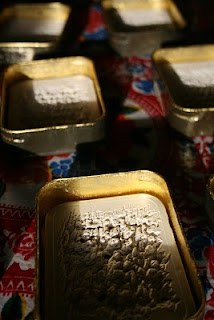
After gunmen murdered 14 teenagers at a birthday party in Cuidad Juarez on Friday, the
Mexican president's response on twitter was cursory, suggesting that brutal violence in the state of Chihuahua is beginning to be seen as the normal order.
Tamsyn Challenger has asked 200 artists to create portraits of
400 women who have been murdered in Chihuahua in the last decade, 'confronting us with and safeguarding in our memory the dead and disappeared.' The exhibition is curated by Ellen Mara De Wachter.
Juana Aguinaga Mares was murdered in the Palo Chino neighborhood in 1997.
Tamsyn asked me to write a poem for the exhibition catalogue, to which Juana's name was integral. Amnesty International's Mexican team and the Rape Crisis centre in Cuidad Juarez were able to provide photographs of many of the murdered women, but none existed of Juana. I found it hard to imagine making something for Juana that was of any value. Except that she was a mother, everything I knew about her was inseparably connected to what I knew about her murder: the cause of her death, what she was wearing, where her body was found.
I wrote her name out in full. And again.
There was a tub of liquified porcelain on the kitchen counter. I poured some into the lid of a tobacco tin and set it on the radiator to dry. What fell from the tin the next day was a smooth tablet of clay, slightly rust-stained. I was able to erase the rust with nothing more abrasive than my fingerprint. I began to write Juana's name in the unfired clay. I wrote her name again and again until it was illegible.
It occurred to me that her name, written like this, was inseparable from the clay, as our DNA is inseparably written through us. Even when the tablet cracked, which it did, often, it cracked along the contours of her name. Since then, I've written her name hundreds of times, as you do when you're a child, learning to write your own name, as you design your signature for the first time. The poem for the catalogue is just an account of the work in porcelain, really. I'll post it in a day or so.
On Thursday I'm going to try firing the tablets. Fired porcelain is surprisingly strong, despite its translucency and apparent delicacy. Unfired, it's exceptionally fragile. The difficulty will be getting the tablets through the firing. They're thin and necessarily contain hundreds of weak points. They're also likely to warp, apparently. Updates on Friday as to how that's gone.
If the firing goes well, the tablets will be set in tobacco tins, lined with gold leaf. There's another tricky procedure, but I like the fact that the materials I am using to commemorate the name of Juana Aguinaga Mares are fragile and precious, difficult and dear.




